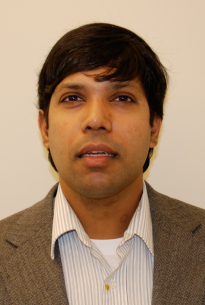Professor Roger Jagdish Narayan
The PhysOrg article Study finds new nanomaterial could be breakthrough for implantable medical devices said
“A team of researchers led by North Carolina State University has made a breakthrough that could lead to new dialysis devices and a host of other revolutionary medical implants. The researchers have found that the unique properties of a new material can be used to create new devices that can be implanted into the human body — including blood glucose sensors for diabetics and artificial hemo-dialysis membranes that can scrub impurities from the blood.Researchers have long sought to develop medical devices that could be implanted into patients for a variety of purposes, such as monitoring glucose levels in diabetic patients. However, existing materials present significant problems. For example, devices need to be made of a material that prevents the body’s proteins from building up on sensors and preventing them from working properly. And any implanted device also needs to avoid provoking an inflammatory response from the body that would result in the body’s walling off the device or rejecting it completely.
Now a new study finds that nanoporous ceramic membranes may be used to resolve these issues. Dr. Roger Narayan — a professor in the joint biomedical engineering department of NC State and the University of North Carolina at Chapel Hill — led the research and says the nanoporous membranes could be used to ‘create an interface between human tissues and medical devices that is free of protein buildup.’”
Roger Jagdish Narayan, Ph.D., M.D. is Professor, Primary Core Faculty, Joint Department of Biomedical Engineering, NC State University and UNC Chapel Hill. He is also Editor-in-Chief of Materials Science and Engineering C: Materials for Biological Applications.
His primary research areas are:
- Biomedical Engineering including Biomaterials, BioMEMS, Implant Design, Implantable Electronics, Nanometer Systems
- Intelligent Systems and Bioengineering including Biomedical Sensors, Medical Devices
- Nanoelectronics and Photonics including Optical Materials and Devices, Silicon Devices and Processing
Roger edited Biomedical Materials, and coedited Printed Biomaterials: Novel Processing and Modeling Techniques for Medicine and Surgery, Advances in Biomedical and Biomimetic Materials: Ceramic Transactions, and Advances in Bioceramics and Porous Ceramics.
His papers include Pulsed laser deposition of functionally gradient diamond-like carbon—metal nanocomposites, Nanostructured ceramics in medical devices: Applications and prospects, Structural and biological properties of carbon nanotube composite films, Stiff subcircuit islands of diamond-like carbon for stretchable electronics, Ultraviolet-illumination-enhanced photoluminescence effect in zinc oxide thin films, Microstructure and electrochemical properties of cathode materials for SOFCs prepared via pulsed laser deposition, and Three-dimensional self-organization of crystalline gold nanoparticles in amorphous alumina.
Roger earned his BA (Summa Cum Laude) in Chemistry from North Carolina State University in 1996, his Ph.D. in Materials Science and Engineering from North Carolina State University in 2002, and his M.D. from Wake Forest University in 2001
Read Ceramic hybrid needles take the sting out of shots and Shellfish and inkjet printers may hold key to faster healing from surgeries. Watch Roger Narayan – Tissue engineering and laser processing of bioceramics.
